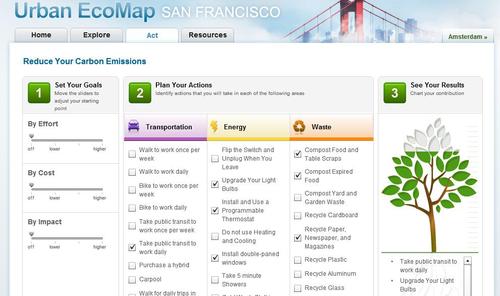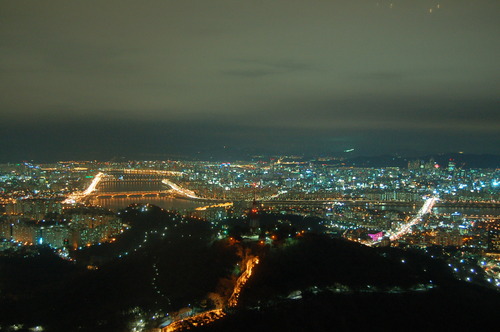Connected Urban Development, a research and development group created by Cisco to participate in the global reduction of emissions. One of their initiatives, SMART 2020 is under the governance of The Climate Group, a nonprofit, aims to use IT to promote smart and efficient urban environments by bringing together businesses, cities, and NGOs under a common organization. The Urban EcoMap is a program that seeks to reeducate the public about their energy consumption, transportation use, and waste production in order to give them the tools to reduce their carbon footprint. So far, the Urban EcoMap has been put in place in two cities: San Francisco and Amsterdam–cities with very different climates but relatively similar environmental cultures, when one thinks of the bicycle culture and the commitments that both cities have made to reducing their climate impact. The pilot project was launched in San Francisco on Earth Day 2009 and in Amsterdam in December of the same year.

The cities have nearly identical (and relatively small) populations of around 750,000 residents, but emit pollutants in very different ways. Amsterdam emissions come mainly from energy (50%) while San Francisco emits a great deal because of transportation (78%). Amsterdam’s per capita emissions are also nearly half of San Francisco’s (4.3 vs. 8.4 metric tonnes of CO2 per capita, per year), so they have a head start on the path to becoming net zero cities.
The web-based tool allows citizens to view their neighborhood’s statistics in regards to transportation, energy, and waste. Then, they are offered solutions that correspond to their priorities. For example, a person who chooses that they would like to make an impact in the cheapest way would get different suggestions than those who want to make the greatest impact possible. It will be interesting to see whether this form of education and resources will be more significant than other education campaigns. The inclination to pursue this kind of environmental project lies in the “seeing is believing” concept and the power of quantification. Most people, especially in San Francisco and Amsterdam, know that they should walk, bike, carpool, use public transportation, and purchase hybrids for personal use, but there is nothing to indicate whether their personal action has had an overall effect. Urban EcoMap lets you select combinations of actions to reach a reduction of 2 metric tonnes of CO2 and leaves it at that–this gives a reasonable target that people can reach with 5 or 6 behavior changes without becoming overwhelmed.

Users are also given the power to share their choices via Facebook, making the city the starting point, but not ending point of support. The interconnectedness of the initiatives in the two cities (governmentally and through their corporate backing from Cisco) brings into question whether cities have more in common and more to benefit from each other than from their nation as a whole. Cities as similar as San Francisco and Amsterdam may be better suited to innovate in tandem than would say, San Francisco and Monterey. Proximity is no longer crucial; indeed, this is a goal of Connected Urban Development, and this international communication will surely become only more common with time.







Recent Comments